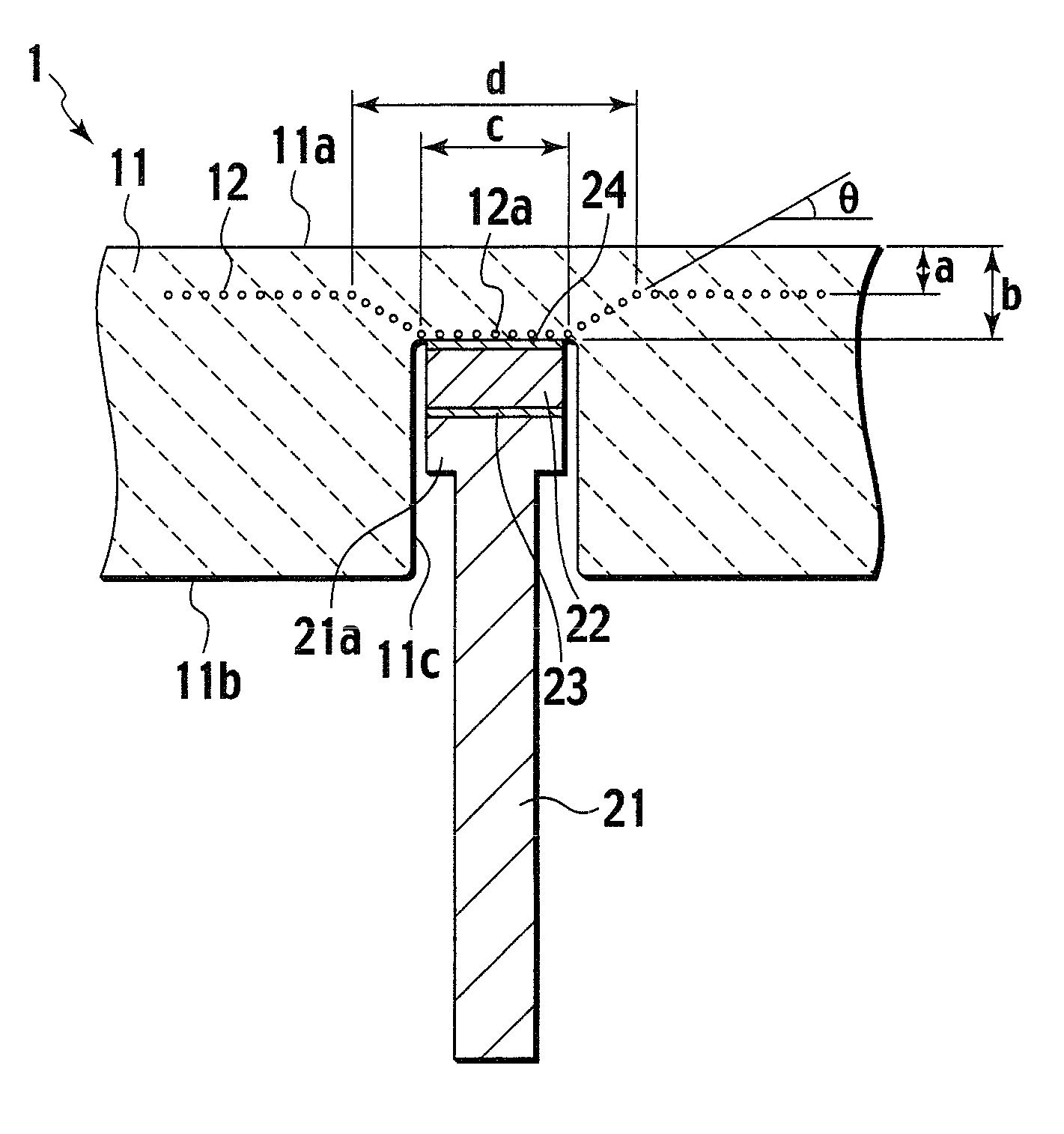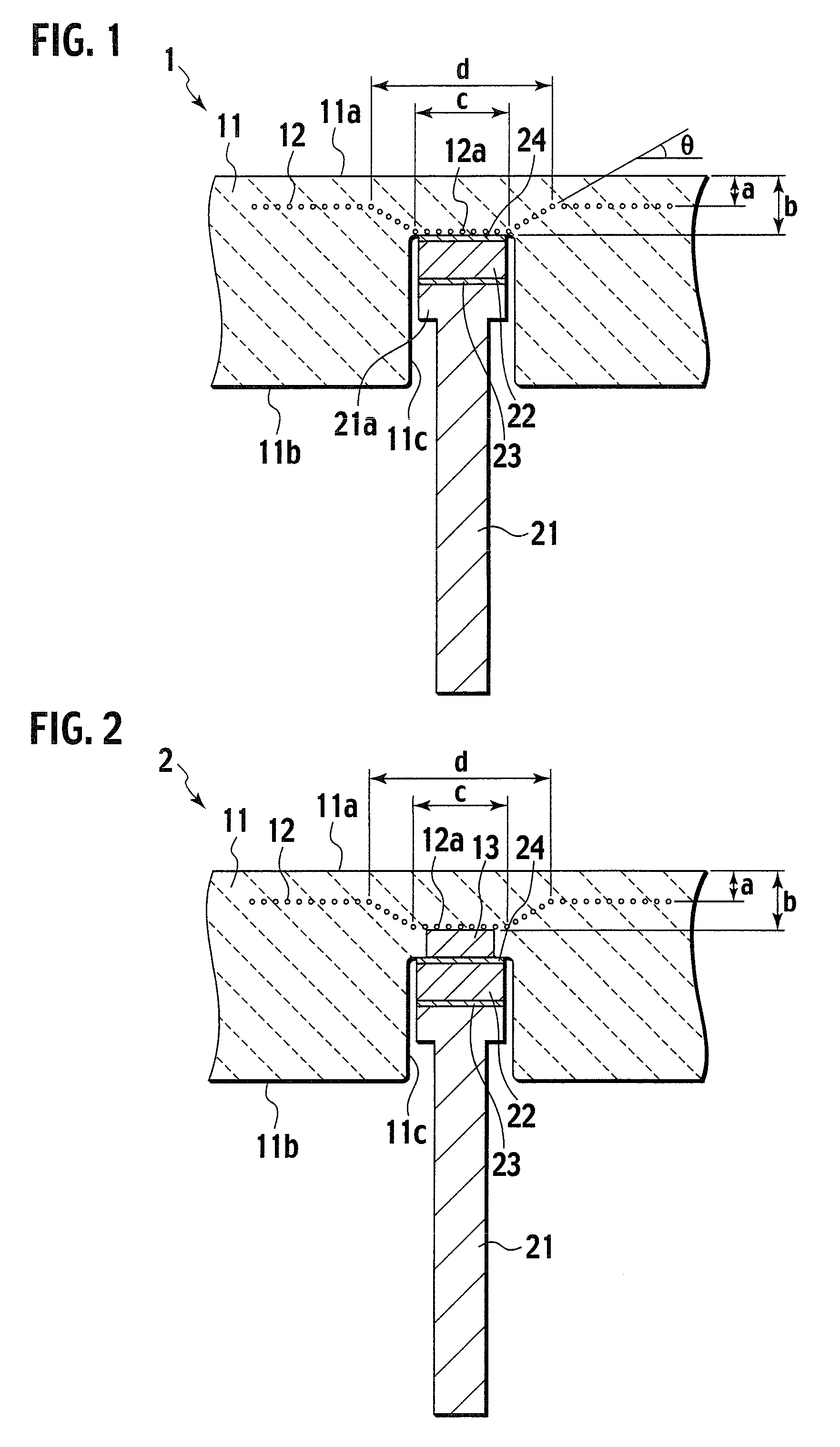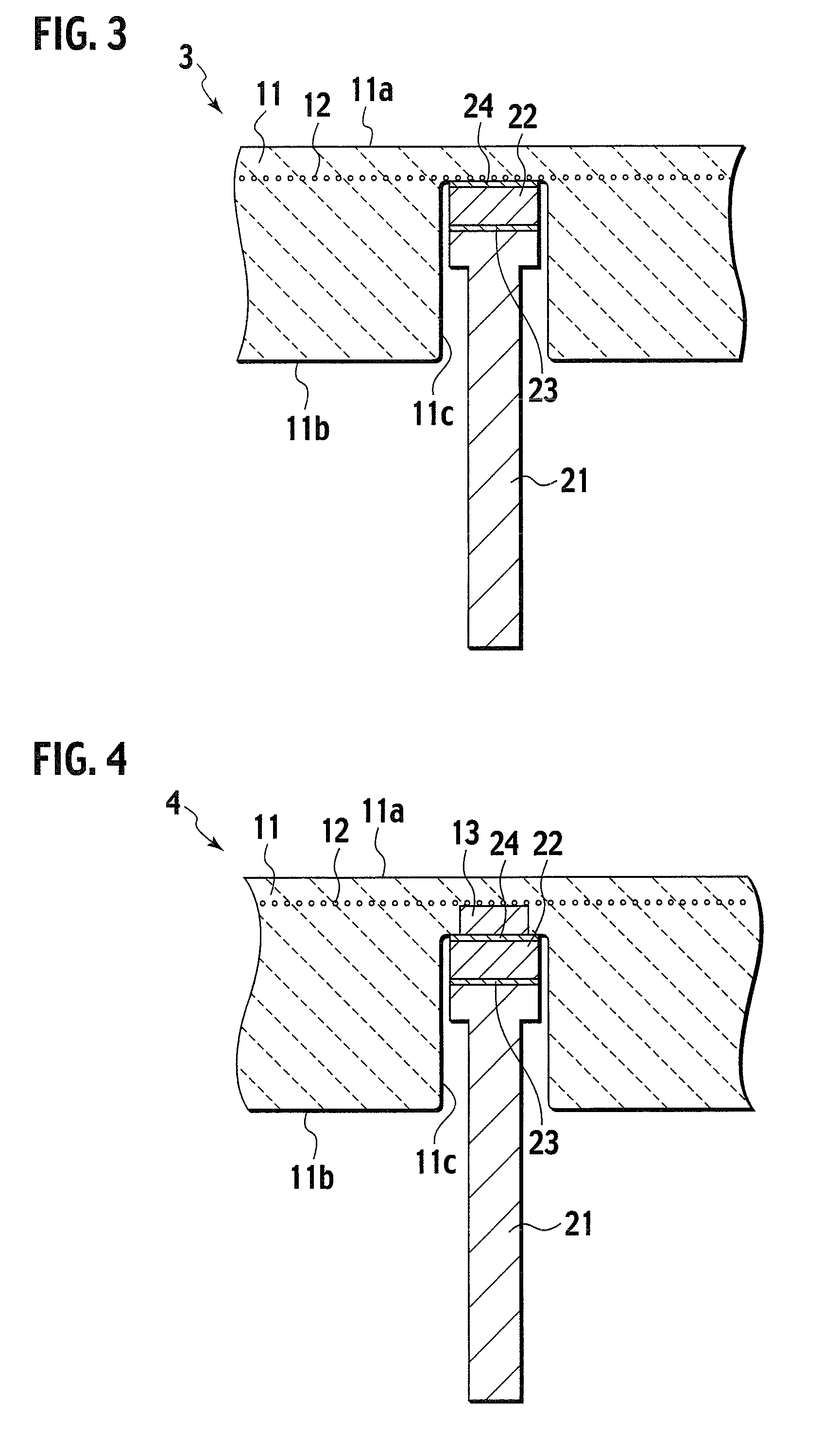Heating device
a heating device and heat sink technology, applied in the field of heating devices, can solve the problems of increasing the risk of cracking, and the thin dielectric material layer or the insulating material layer may have a crack, so as to prevent the tensile strength of the brazing joint section from being reduced, the brazing area is sufficient, and the strength is sufficient.
- Summary
- Abstract
- Description
- Claims
- Application Information
AI Technical Summary
Benefits of technology
Problems solved by technology
Method used
Image
Examples
examples
[0052]The heating devices as shown in FIG. 1 and FIG. 2 were prepared. First, a ceramics base was prepared in the manner as described below. First, AIN powders obtained by the reduction-nitridation method were added with 5% of Y2O3 to provide ceramics mixed powders. Then, the ceramics mixed powders were added with acrylic resin binder to prepare granulated powders by the spraying granulation method. The granulated powders were filled in a metal mold and were pressed to prepare a preparatory compact. Then, a transfer pattern was used to form a groove at a position at which a resistance heating element is embedded. Then, the groove includes therein a linear Mo resistance heating element that is provided as a wound body having a diameter of 0.5 mm. Then, ceramics raw material powders are filled in this grooved. Then, an alumina-made bulk component having the same shape as that of the inner side of this concave section was placed at a part corresponding to the concave section of the hig...
PUM
| Property | Measurement | Unit |
|---|---|---|
| distance | aaaaa | aaaaa |
| diameter | aaaaa | aaaaa |
| depth | aaaaa | aaaaa |
Abstract
Description
Claims
Application Information
 Login to View More
Login to View More - R&D
- Intellectual Property
- Life Sciences
- Materials
- Tech Scout
- Unparalleled Data Quality
- Higher Quality Content
- 60% Fewer Hallucinations
Browse by: Latest US Patents, China's latest patents, Technical Efficacy Thesaurus, Application Domain, Technology Topic, Popular Technical Reports.
© 2025 PatSnap. All rights reserved.Legal|Privacy policy|Modern Slavery Act Transparency Statement|Sitemap|About US| Contact US: help@patsnap.com



